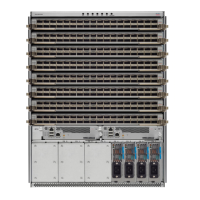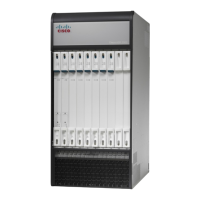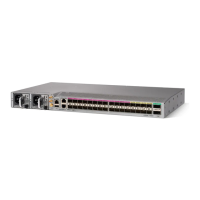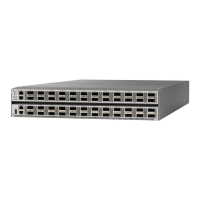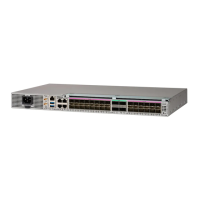SPF Computational Hold Times
The SPF computational hold time sets the minimum time between two consecutive SPF computations on the
VSAN. Setting this to a small value means that FSPF reacts faster to any fabric changes by recomputing paths
on the VSAN. A small SPF computational hold time uses more switch CPU time.
Link State Records
Each time a new switch enters the fabric, a link state record (LSR) is sent to the neighboring switches and is
then flooded throughout the fabric.
The following table displays the default settings for switch responses.
Table 26: LSR Default Settings
DescriptionDefaultLSR Option
The time a switch waits for an
acknowledgment from the LSR
before retransmission.
5 secondsAcknowledgment interval
(RxmtInterval)
The time a switch waits before
sending an LSR refresh
transmission.
30 minutesRefresh time (LSRefreshTime)
The time a switch waits before
dropping the LSR from the
database.
60 minutesMaximum age (MaxAge)
The LSR minimum arrival time is the period between receiving LSR updates on this VSAN. Any LSR updates
that arrive before the LSR minimum arrival time are discarded.
The LSR minimum interval time is the frequency at which this switch sends LSR updates on a VSAN.
Configuring FSPF on a VSAN
You can configure an FSPF feature for the entire VSAN.
Procedure
PurposeCommand or Action
Enters global configuration mode.configure terminal
Example:
switch# configure terminal
switch(config)#
Step 1
Cisco Nexus 5500 Series NX-OS SAN Switching Configuration Guide, Release 7.x
170 OL-30895-01
Configuring Fibre Channel Routing Services and Protocols
FSPF Global Configuration

